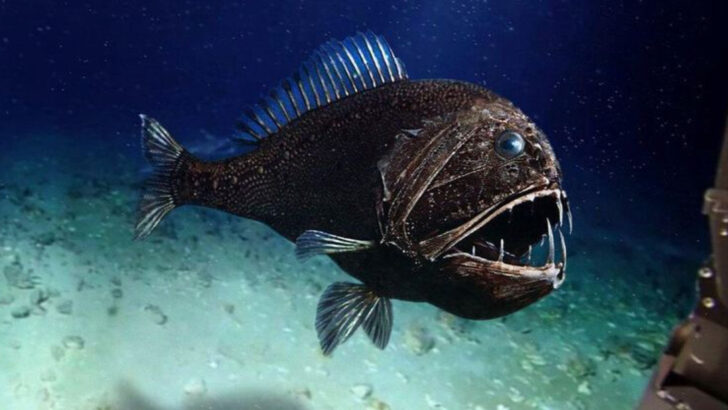The deep sea is a place of monsters—and miracles.
Pitch black. Bone-crushing pressure. Freezing cold.
And somehow… life thrives down there.
These aren’t your average fish.
They glow, twist, stretch, and squish in ways that make sci-fi look tame.
Some look like aliens. Others act like them.
And all of them have cracked the code on surviving Earth’s final frontier.
We’re diving past sunlight, past comfort, past anything remotely normal.
And what we find?
Terrifying. Mesmerizing. Absolutely unforgettable.
Meet 13 of the deepest, weirdest, and most fascinating creatures lurking at the bottom of the ocean.
You’ve never seen anything like this.
Giant Tube Worm
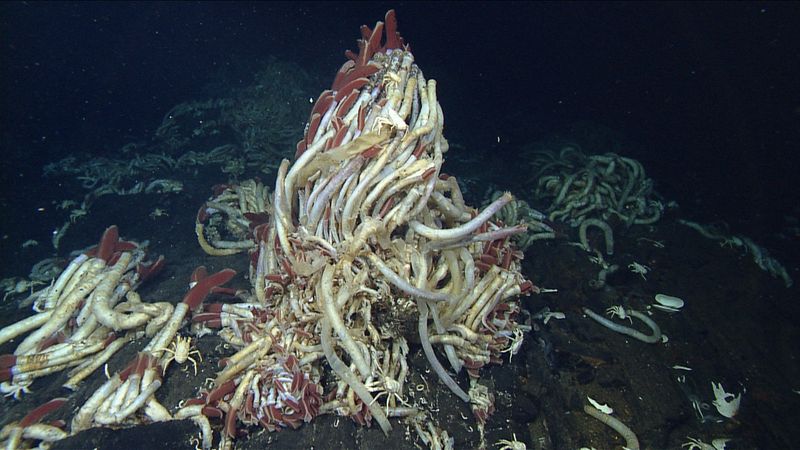
Giant tube worms are among the most incredible creatures found in the depths of the ocean. Living near hydrothermal vents, these worms can reach up to 8 feet in length, thriving in the toxic environment with their symbiotic relationship with bacteria. These bacteria convert chemicals from the vent into energy, providing nourishment for the worm. Their vibrant red plumes are striking and provide a stark contrast against the dark ocean floor. Despite the extreme conditions, these worms thrive, showcasing the adaptability of life in the ocean’s depths.
Dumbo Octopus
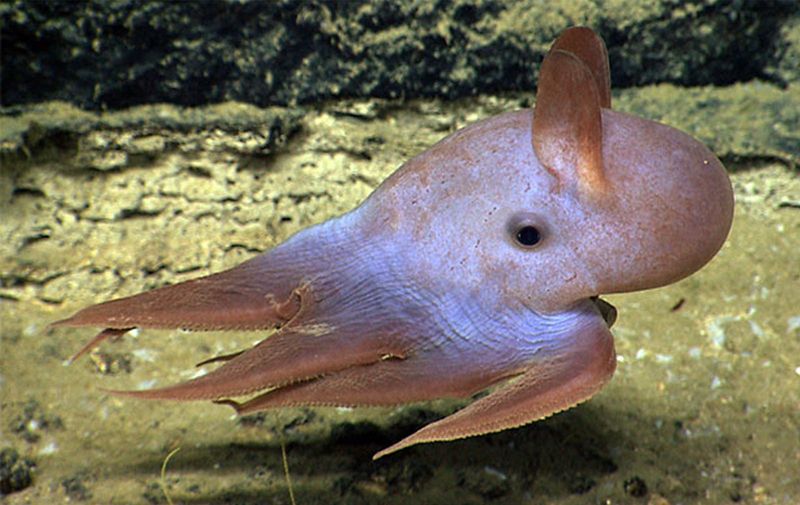
With ear-like fins resembling Disney’s famous elephant, the Dumbo octopus glides gracefully through the deep sea. They inhabit depths of 9,800 to 13,000 feet and are known for their unique method of locomotion. Instead of propelling themselves through jets of water, they flap their fins to navigate the water. Their translucent bodies and mysterious presence make them a captivating sight in the ocean’s depths. Despite their deep-sea habitat, they maintain an ethereal elegance, a true testament to the ocean’s wonders.
Anglerfish
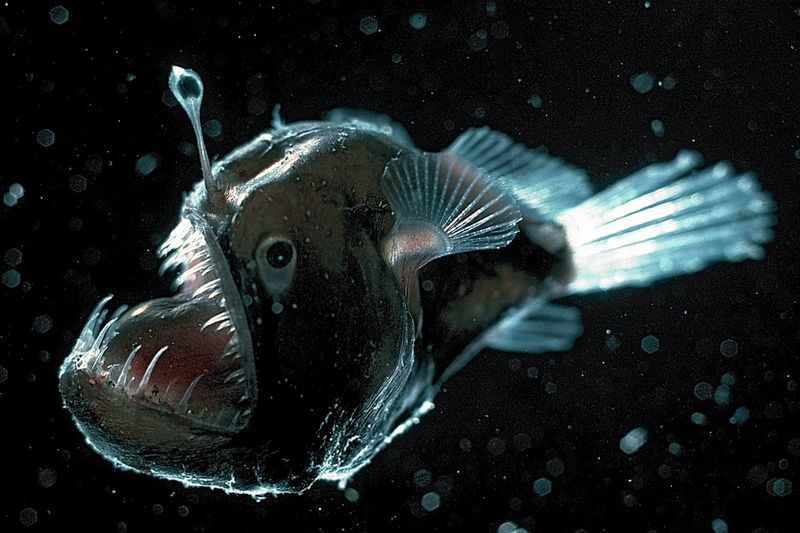
The anglerfish is a notorious deep-sea predator known for its terrifying appearance and unique hunting technique. Its bioluminescent lure protrudes from its head, attracting unsuspecting prey in the pitch-black depths. With its sharp teeth and expandable stomach, it can consume prey up to twice its size. This fish thrives at depths of over 6,600 feet, where the pressure is intense and the environment unforgiving. Despite its fearsome look, the anglerfish remains an excellent example of evolution’s ingenuity in adapting to extreme conditions.
Deep-sea Dragonfish

The deep-sea dragonfish is as fearsome as it sounds, with long needle-like teeth and a barbel that emits light to attract prey. Found at depths of 5,000 to 7,000 feet, this fish is a master of camouflage, using bioluminescence not just for hunting, but also for blending into the dark waters. Its ability to produce red light, invisible to most deep-sea dwellers, gives it a hunting advantage. This dragonfish is a testament to the survival strategies that evolve in the challenging environment of the deep sea.
Gulper Eel
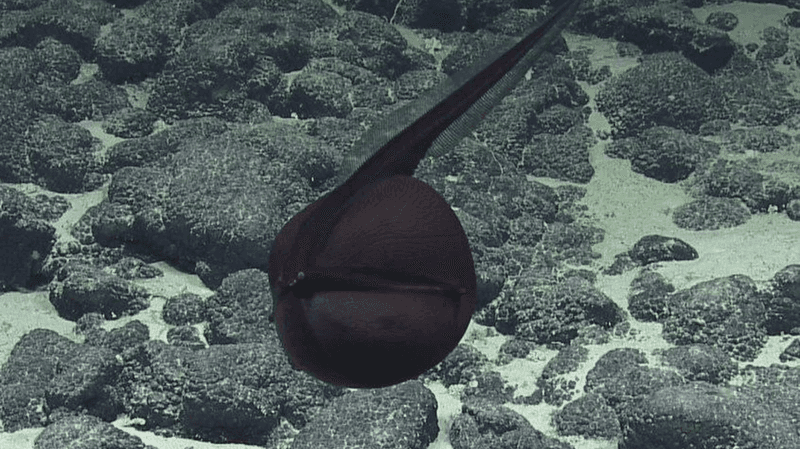
One of the deep sea’s most bizarre inhabitants, the gulper eel, is known for its enormous mouth capable of engulfing prey much larger than itself. Found at depths of 3,000 to 6,000 feet, this eel can expand its mouth like a pelican, allowing it to consume various prey sizes. Its long, whip-like tail ends with a bioluminescent organ that attracts curious creatures. Despite its exaggerated features, the gulper eel is a master of efficiency, perfectly adapted to the sparse, dimly lit world it inhabits.
Goblin Shark
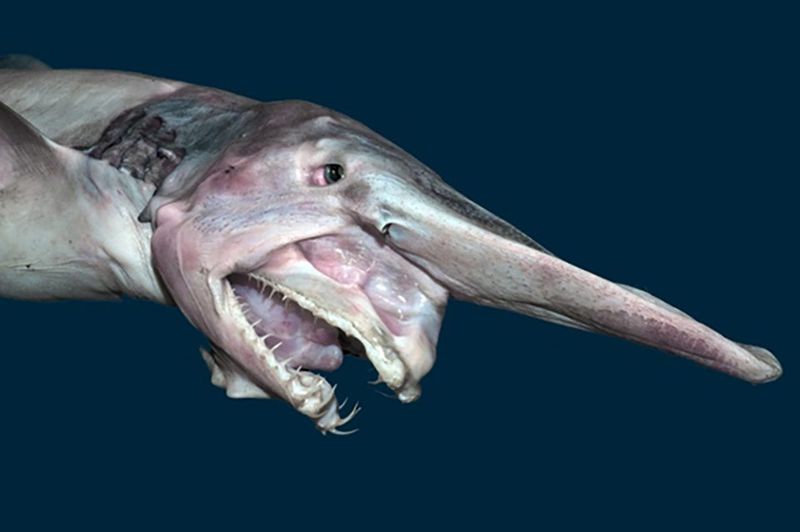
The goblin shark is often referred to as a ‘living fossil’ due to its ancient lineage and prehistoric appearance. Found at depths around 3,000 feet, this elusive shark is characterized by its elongated snout and protruding jaws, which can snap forward to capture prey. Its pink hue comes from blood vessels beneath the skin, visible in the low light of the deep sea. The goblin shark’s unique features and rarity make it a subject of intrigue and highlight the diversity of life forms lurking in the ocean’s depths.
Vampire Squid
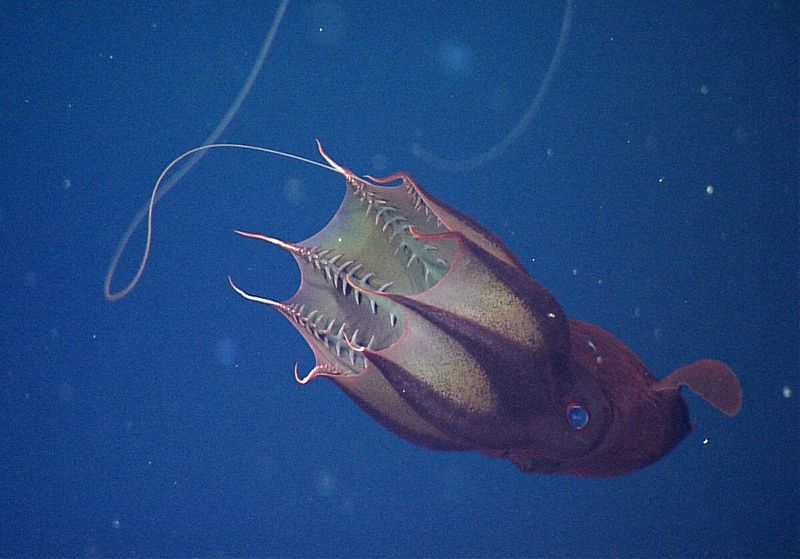
The vampire squid, with its ominous name, evokes images of dark, mysterious creatures lurking in the ocean depths. Despite its fearsome name, this deep-sea dweller is more of a gentle scavenger than a predator. Its jet-black skin and webbed arms, lined with spines, create an eerie silhouette. Bioluminescent organs give it an otherworldly glow, allowing it to startle predators and communicate with others. Found at depths of 2,000 to 3,000 feet, the vampire squid is a marvel of adaptation, thriving in oxygen-poor environments.
Snailfish
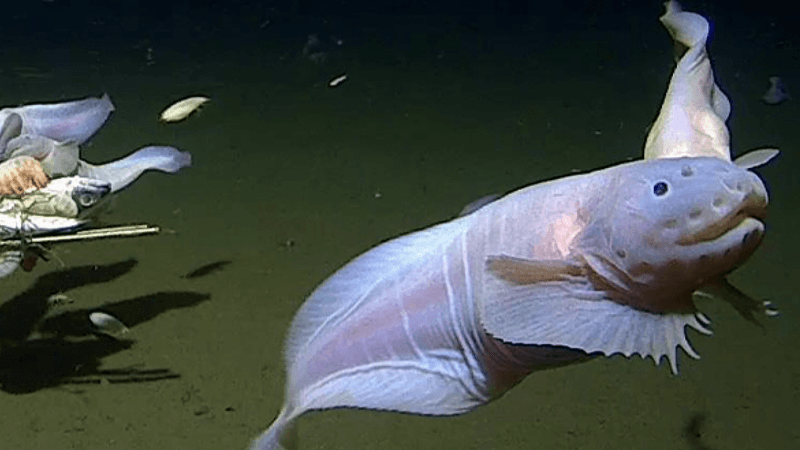
Snailfish are remarkable creatures, residing at depths of over 26,000 feet, making them some of the deepest-living fish known. These fish have soft, gelatinous bodies that can withstand high pressure and cold temperatures. Their translucent skin and delicate features seem almost ethereal, allowing them to blend seamlessly with their environment. Unlike many deep-sea creatures, snailfish do not exhibit bioluminescence, relying instead on their remarkable adaptation to thrive in extreme conditions. Their presence in such depths underscores the ocean’s incredible diversity and adaptability.
Fangtooth Fish
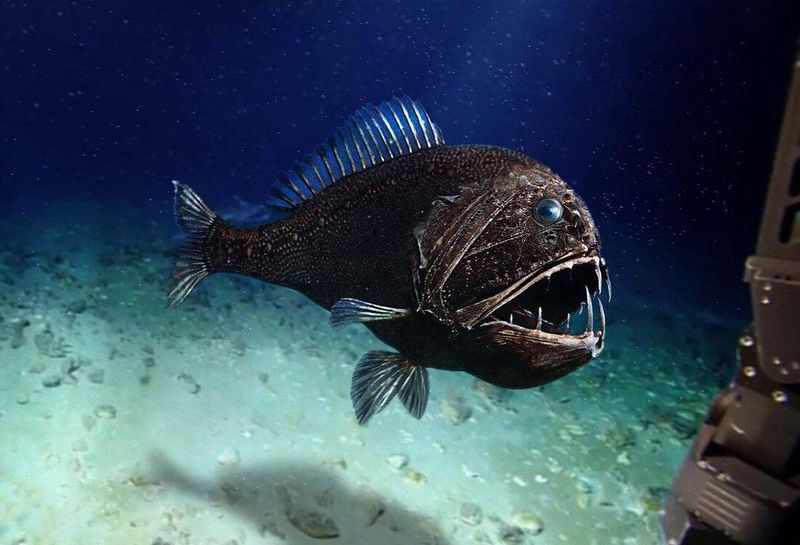
The fangtooth fish is one of the ocean’s most intimidating residents, with oversized teeth that give it a fearsome look. Despite their small size, these fish are formidable predators, lurking at depths of 16,000 feet. Their teeth are so large they have evolved special sockets to accommodate them. In the pitch-black oceanic depths, fangtooth fish rely on their acute sense of smell and touch to locate prey. Their menacing appearance belies a fascinating evolutionary journey, adapting to the dark, high-pressure world they inhabit.
Frilled Shark
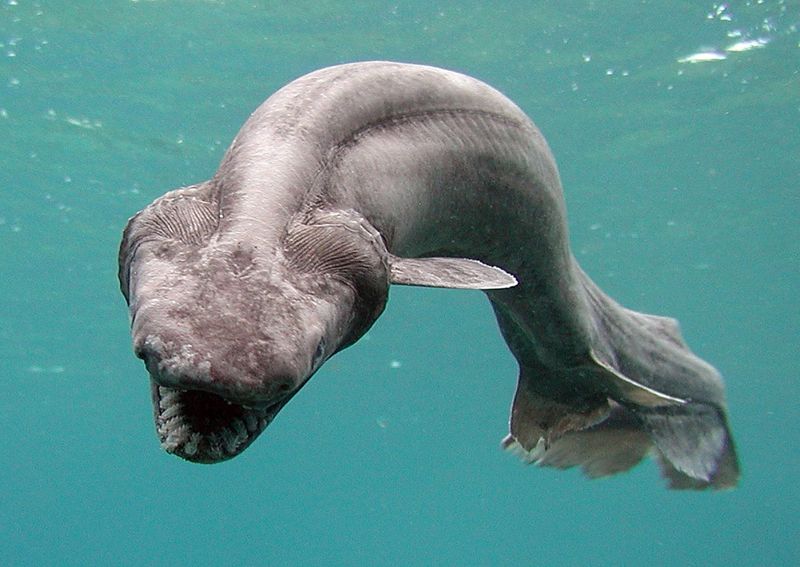
The frilled shark, often dubbed a ‘living fossil,’ is an ancient creature with a snake-like body and frilled gills that harken back to the age of dinosaurs. Found at depths of up to 5,000 feet, this elusive shark is rarely seen by humans. Its long, slender body and unique mouth with multiple rows of needle-like teeth allow it to capture squid and other prey. This shark’s primitive features offer a glimpse into evolution’s ancient past, highlighting the ocean’s role as a reservoir of biodiversity and history.
Black Swallower
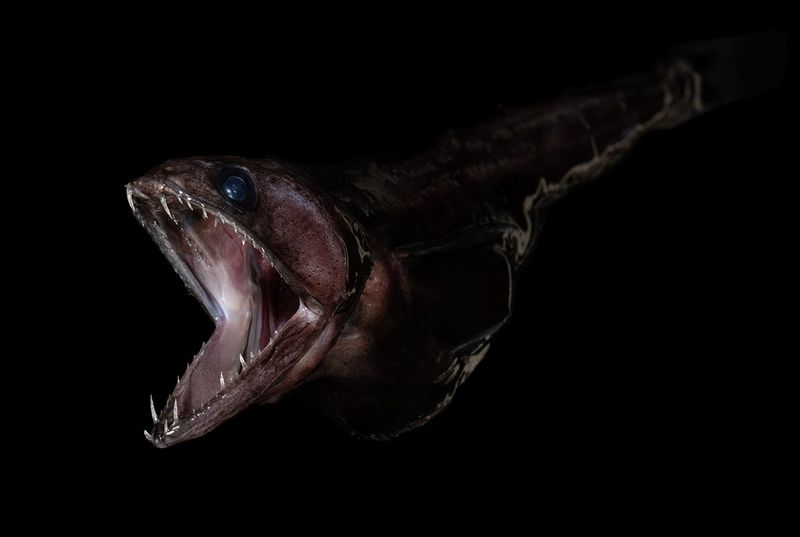
The black swallower is a curious deep-sea fish known for its astounding ability to consume prey much larger than itself, thanks to an expandable stomach. Residing at depths of 2,300 to 9,000 feet, this fish swallows its prey whole, often resulting in a distended belly. This unique adaptation allows the black swallower to thrive in the deep ocean’s resource-scarce environment. Its dark coloration and reclusive nature make it a mysterious resident of the ocean’s depths, illustrating the inventive survival strategies of deep-sea creatures.
Colossal Squid
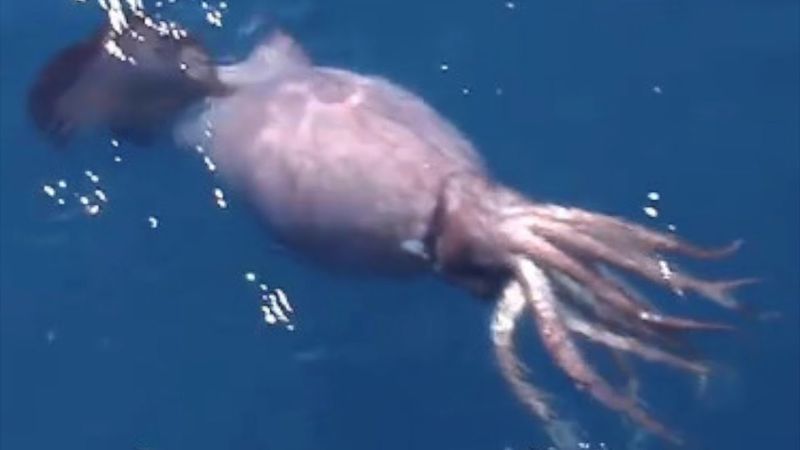
The colossal squid is a true giant of the deep, with eyes the size of dinner plates and tentacles armed with rotating hooks. Found in the cold depths of the Antarctic waters, this creature can reach lengths of up to 46 feet, making it one of the largest known invertebrates. Its massive eyes allow it to detect faint light in the deep ocean, aiding in hunting. The colossal squid’s elusive nature and impressive size have fueled myths and legends, making it a symbol of the ocean’s vast, unexplored mysteries.
Hatchetfish
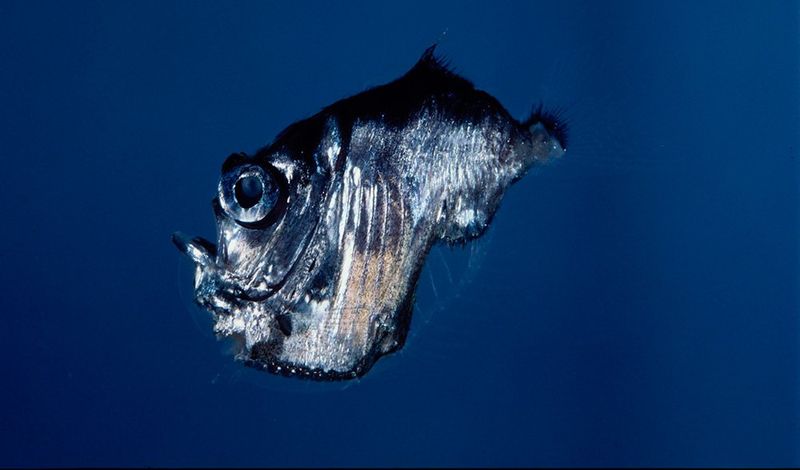
Hatchetfish are named for their peculiar shape, resembling a hatchet, with thin bodies and luminescent sides. Found at depths of 600 to 4,500 feet, they use bioluminescence for counter-illumination, a survival tactic that helps them avoid predators by matching the surrounding light. Their silvery bodies reflect the faint light filtering from above, making them almost invisible from below. This remarkable adaptation allows hatchetfish to thrive in the twilight zone of the ocean, demonstrating the innovative ways life has evolved to survive in the deep sea.

